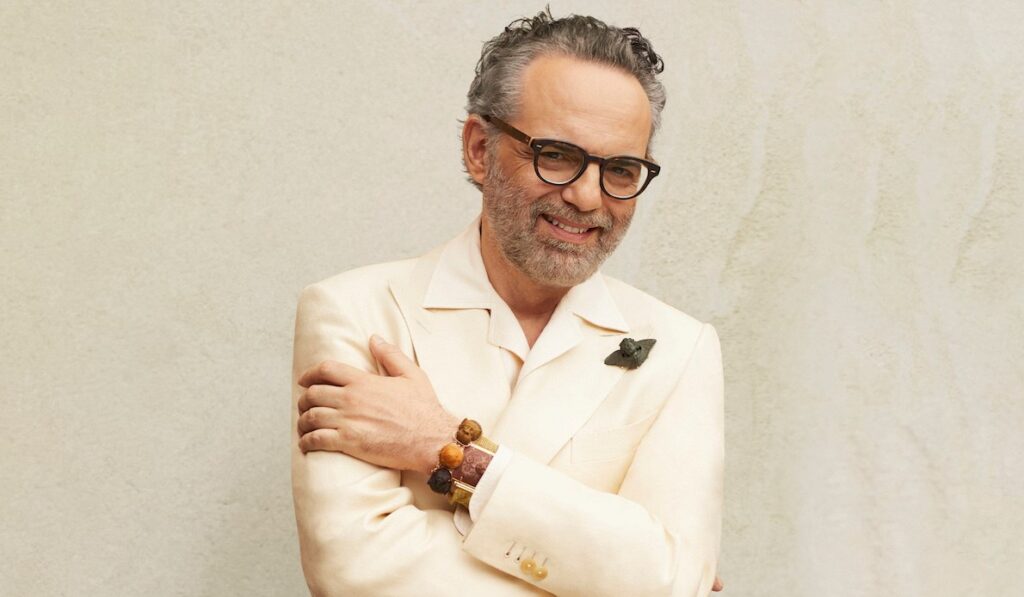Repositioning Valentino as a couture maison, betting on values capable of permeating the company’s culture, and putting the customer at the centre to obtain a solid growth. These are the key elements of the strategy developed by Jacopo Venturini since his return to the Mayhoola for Investments brand as ceo. A year and three months have passed since his new role was made official and Venturini, with his characteristic pragmatic attitude, has preferred to wait for concrete results before speaking. Targets were achieved despite the complex challenge of Covid, which penalised Valentino, like all fashion companies in the 2020s. Sales reduced by 27% to 882 million of euros (see MFF of 12/06/2021).
But today we can look to the future with hope. During the first half of 2021, the company has repeatedly reiterated that it has no intention of listing itself, it posted revenue growth of 64% at current exchange rates to €574 million from €362 million in 2020, a result as the of of the same period in 2019, the year in which the best performance in the maison’s history was achieved, and the outlook is encouraging for the second half of the financial year. As Venturini himself explained to MFF.
What were the first steps of your work?
We started with a strong statement. Valentino is the most established Italian couture house with a great heritage. The brand had to be re-positioned, we had to make choices, starting with the closure of Red to have a single label. I returned to this company for the third time with a creative director, Pierpaolo Piccioli, whom I have known for over 20 years and with whom there is a great connection. It was a great honour for me to be here again, in this position, with the shared objective with the shareholders of implementing a strategy that we had well in mind. You often insist on the word “culture”.
What does it mean for Valentino?
The words ‘maison’ and ‘couture’ open up a series of values that should permeate the culture of the company, to make it more solid in its growth. The word ‘maison’ is linked to an idea of intimacy that must be translated in our shops and in the relationship with the consumer. On the other hand, the term couture does not only mean extreme attention to detail and product quality, but also a strong, personal relationship between the premières and the customers. Client first.
What does it mean to you?
Nowadays it’s very fashionable to say that a company is client centric, but I think that putting people at the centre of attention is a reality and not just a marketing tool. In order to do that we have to create a corporate culture that is colleague centric. That is, that every employee is a client of his colleagues. So I enlisted Rosa Santamaria Maurizio as chief human resources officer and Enzo Quarenghi as chief client officer and digital acquisition, part of a division that didn’t exist in the company.
Another aspect that’s being emphasized a lot today is the customer experience….
For me, it does not begin when the customer enters the store. That’s the second step. The first is when the customer comes in contact with the brand and this often happens through digital. So I asked to conceive the company as an entertainment company, which is even more important for fashion brands after Covid. Then we move onto the client journey, when the consumer gets to the brick and mortar. So I appointed Marco Giacometti as chief commercial officer, who was tasked with structuring a journey that puts the customer at the center of our attention.
How did these operations influence the 2021 numbers?
The first half of 2021 was archived with a growth of 64% on 2020 and flat on 2019, a perspective that is projected towards the end of the year, taking into account the uncertainty of the context. This result was driven by e-commerce, which went from a penetration of 5% to 15% between 2019 and 2020, as well as by the Middle East, United States and Greater China business. While Europe was still suffering although we see an improvement in the second half of the year.
How important is China for you?
We have strong growth potential if you think that in 2018 and 2019 this area and Hong Kong had the same weight in revenues as today. We are clearly under exposure. So we aim to be present in cities where we don’t have stores yet, for example in Shenzhen in 2022, Guanzhou and Wuhan in 2023. China is also the market where we have chosen to launch the Resignify project, which was presented in Shanghai in December and will be launched in Beijing in October. How is the turnover of the first half of the year balanced between retail and wholesale? It was 55% through retail and 45% wholesale, but my goal is to bring retail to weigh 70% here in five years. We want to better select our partners and create exciting alliances. In retail, on the other hand, we want to grow very catiously, focusing on China, the United States and Canada…. In 2022, for example, we are targeting Miami and a location in New Jersey.
What about e-commerce?
It has been an important driver of growth. We also wanted to put the human aspect in the foreground here, studying formulas such as Valentino insights or Chez maison Valentino, which have had an excellent impact on customers who are now 55% more likely to be on the site.
How did the product categories do?
In the first semester, accessories performed better than ready-to-wear, which is still very important for us. In the second half of the year we saw an acceleration in this segment as well.
What about menswear?
It is in line with the other categories and accounts for 20% of revenues. In the past there was great growth and now we are in a moment of consolidation of visibility, thanks also to Pierpaolo Piccioli’s desire to have men’s wear present in the couture shows.
Are there any brand extensions in sight?
We have a license for eyewear with Luxottica and for beauty with L’Oréal. The latter has already exceeded expectations with the launch of the Voce viva fragrance. Now we want to take things step by step and this has been a year of re-positioning.
Are you planning other collaborations such as the one with Levi’s?
This is a project that came about very spontaneously from our style office. It’s part of a process of evolution of ready-to-wear towards a more daywear dimension and what will come next will be guided by the same drive for authenticity.
How are you addressing the issue of sustainability?
There is an aspect that is unknown to the most of people. In 2013 Valentino signed an agreement with Greenpeace to eliminate all chemicals in the supply chain and adhered to the Zero deforestation commitment. We will no longer use alpaca from 2022 and we are trying to use viscose with as little damage to the market as possible. From this year there is a new 55% recyclable packaging. From the end of 2021 we will stop using fur.
Will you be investing in the Italian supply chain?
All our production is made in Italy, we have several joint ventures and we have made acquisitions in the past. Now we are well structured. However, I think Italy needs to create a system and solid synergies. We are in fact members of Cnmi, as well as of the French Fhcm.
What have you learned from the pandemic?
I started at Valentino in the middle of the pandemic and I tried to turn this into an opportunity, exploiting the benefits of digital and making it coexist with physical. I hope I have conveyed this message to all the teams and that the results today are tangible. (rights reserved)
Orario di pubblicazione: 09/09/2021 08:02
Ultimo aggiornamento: 09/09/2021 08:02







